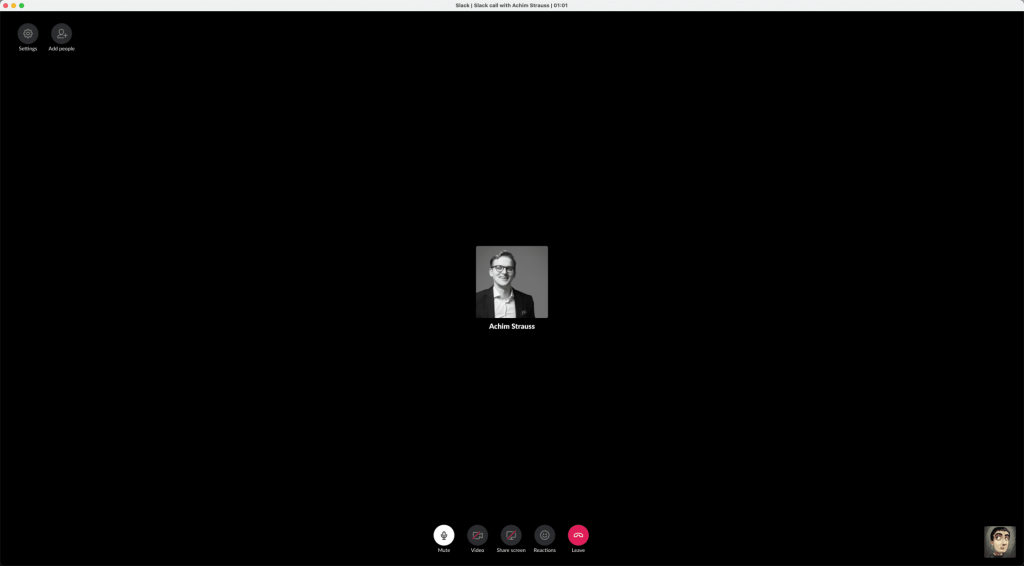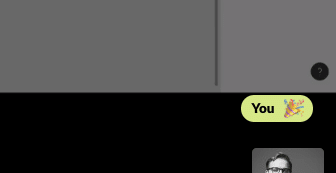Communication is part of our daily work. In every industry and every job. We discuss daily and plenty – even in professions like mine where stereotypes falsely suggest we are more introverted. Verbal and visual communication is a deeply human trait and our modern culture, our economy, and our wellbeing depends heavily on clear and good communication.
But since the pandemic, our forms of communication have been deeply disrupted. Many of us went from face-to-face to online-first since the outbreak of the 2020 pandemic and the following stay-home orders. I am here to discuss a little about the impact I see on communication in online meetings and how to make the best of it, based on one typical example.
Being the presenter these days
Many of us have already been in many virtual meetings long before the outbreak of the virus. It slowly (very slowly) became a thing. But since the pandemic, this process accelerated, and attending online meetings became a necessity. I have been working remotely before the pandemic, but still, the number of online meetings increased since then.
Perhaps you have recently been the presenter in one of those meetings. Sharing your screen, thereby losing the view onto the webcam-faces of your colleagues (if they even have their webcams switched on).
In your meeting, you bring up important topics. You want to be heard, understood and maybe spawn a constructive dialog because you put all your effort into this topic. You – like me, may have felt disconnected sometimes from your online audience – because in the online meetings it has been quiet when you don’t speak. So very quiet. You start wondering what is going on.
Maybe the participants…
- are disagreeing with you
- have zoned out
- went to the toilet
- didn’t understand you and are too polite to ask
- have lost their internet connection
All these can and probably have happened already in meetings we participated. So at the end of the last sentence, you say “right?” or “any questions so far?”. And no one answers. Now you start thinking you were going too fast or you spoke utter nonsense and people are afraid to tell you. Or they just didn’t listen as they worked in parallel on something else. After all, deadlines are pressing (as always).
Being the audience these days
Let’s shift the perspective for a moment to your audience. You have been in that position lately a lot, so you know: the facilitator of the meeting is likely doing a great job and is not boring. The audience probably listened.
Of course, some listeners zoned out, others are too shy to ask their questions, or are too afraid of the awkwardness when people speak over each other (this has increased a lot). This is not a big deal, it happens also in real meetings. But in real meetings, we have learned to use some form of etiquette.
When I speak to my colleagues as a presenter in a physical meeting, I try to look them into the eyes, thereby I receive feedback from them. This is what my parents taught me as common sense.
As a member of the audience, ideally, I try to do the same: sometimes I nod or engage by asking a question. In a face-to-face meeting, my physical presence makes me visible. It makes me vulnerable but this also involves me.
Even a snoozing audience gives a lot of feedback to you when you are in the same physical space – more than you get in many online meetings these days. Interestingly, I have seen people snoozing away in meetings more than once. But in any face-to-face meeting, listeners usually give some communication cues. Looking into the eyes or quietly nodding is an excellent way of being a good colleague and supportive with our more social tasks. This happens only to a very limited extent in online meetings. Interestingly, we were not born with an “active-listener” etiquette (at least I wasn’t). But many of us worked on becoming good communicators during school, career, or further formation. These learned methods might not be perfect, but they are proven to work.
Since then we have technologically evolved into a more remote-centered civilization, but our behaviors have not yet been adapted to this change.
Do we need to act?
Perhaps dear reader you disagree with my call to action. I give you my opinion on some potential criticism.
- “This will just solve itself”
Sure it will somehow. But I think we can do better than just somehow. With “somehow” it will not be as good as it can be. This will shape our human interactions for years to come and I want us to strive for something better. - “Just be confident as a presenter, even if no one gives you direct communication feedback”
I think growing your confidence as a professional is an important lesson to learn and this new challenge can help us with that. But I want to think that we are not only professionals but also humans. After all, we are supportive when we communicate in real life and we are deeply social beings. So let us try to fill that gap of social interaction that has opened itself in front of us. - “It is better if we can zone out in unimportant meetings”.
I understand your point. Heck! I have to admit that I was taking some notes for this article while on another call. In some form, this can be a great opportunity to increase productivity AND employee satisfaction. Let us find means to leverage the new ways while also engaging in a human-supportive communication style. We do not need to be authoritarian about it.
Thinking about solutions
This is me as a member of the audience in Slack.

How does this compare to being in a physical meeting? In my opinion, being a member of an online audience, I have a feedback deficit.
Often there is zero audio and visual feedback. That makes things so much harder for the presenter and other people involved.
No technology lets us look into each other’s eyes through Slack or Teams yet or let us experience the feeling of physical presence and I think that is also ok. Maybe there has not to be a single technology. Perhaps there are other ways of doing this.
My firestarter suggestions to ignite a change:
- Give visual feedback through emoticon reactions (see image)
- Give visual feedback through a webcam (just quietly nod or put a thumbs up in the camera)
- Give verbal feedback (audio feedback IMHO works better in online meetings, but can cause overspeaking)
- Give any other multi-modal feedback
- Ask specifically for the opinion of the more quiet participants
- Use interactive collaboration tools and encourage the use of “gamification” (e.g. encourage the use of emoticons in a Miro-board)
- Involve people from the beginning of the meeting by asking some warmup questions
- Experiment with the quietness: let it happen and see who jumps in
- Do not call people or the audience out on their passiveness
- Involve individuals to state their opinion, but…
Instead of ending your sentence with “…what do you think, Achim”, say “Achim might have something to say also – …” and then continue briefly to elaborate on your point. Achim can then prepare his contribution. - Generally: keep your webcam on as much as it makes sense

This is not a comprehensive list of possibilities. I do not think I alone can come up with such a list, nor probably can you alone. I am convinced, the etiquette we have today for face-to-face meetings also did not emerge from one person’s mind, but over time. This post is also about challenging everybody, to think and act thoughtfully about it. I am sure that over time patterns will emerge that we can all use.
It’s all about caring about communications culture that helps achieve goals
Admittedly, none of the above-mentioned suggestions are yet perfect or wholesome. Probably never will we have a solution that gives us all the benefits of remote work and on-premise work, without any of the downsides? I sense that through the year 2020 and continuing, our industry went secretly through a major change of our communication forms, without thoughtfully adapting our habits and communication etiquette. We went from default face-to-face meetings to default online-first meetings.
At Gofore, we genuinely care about the culture in our company and how we can help our clients with achieving their goals – technically and culturally. Perhaps what we need is that each of us adapts our communication patterns on a small scale. Every one of us needs to be aware of the specialties of our new communication forms and apply new forms of how to deal with them, for example, those seen above. This should compensate for the loss of approachability and connectedness. Following that, we should continuously encourage others to do the same.
By doing so, I believe we can create a culture of good communication patterns that can eventually become the socially accepted way of good online meetings and form a generally accepted etiquette. We are now in a unique time to make this happen, by inspiring the cultures of the organizations we work at.



